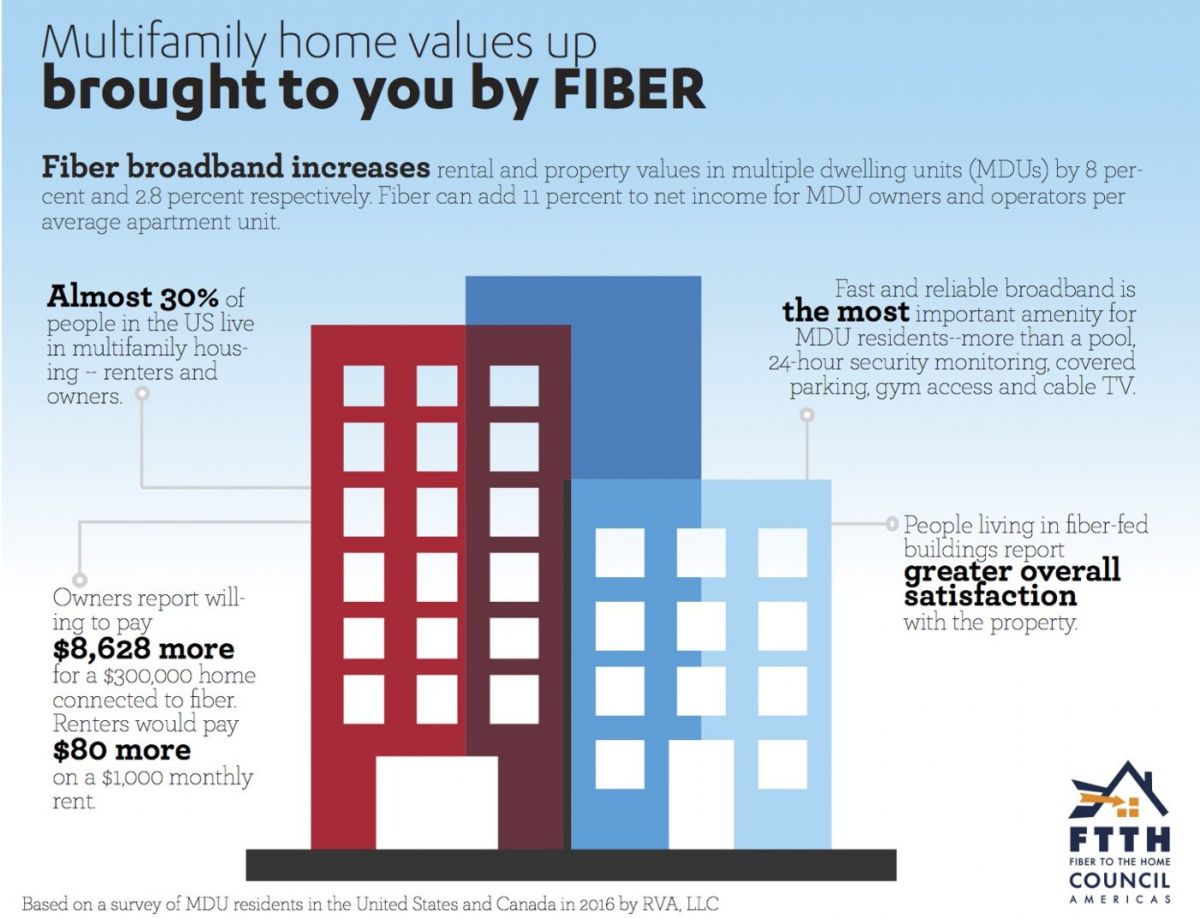BT First To Bring Gig Fiber To MDU In Vermont
Not everyone’s American dream involves owning a single-family home but most of us DO want high-quality Internet access in our household. In major metropolitan areas, apartment renters are more likely to have cable and some are lucky enough to have Fiber-to-the-Home (FTTH). It’s only been recently, however, that owners of multiple dwelling unit buildings (MDUs) have really started to appreciate how fiber-optic connectivity, especially the gigabit kind, can add value to their investment. Now, a pair of MDU developers in Vermont will be the first to offer gigabit connectivity in the state to their renters and they’re choosing Burlington Telecom (BT) to provide the service.
The Gold Standard
“Fiber optic networks are fast becoming the gold standard both at work and at home, so it was important for us to have Burlington Telecom for this project.” says Jacqueline Dagesse [one of the developers], “Including Gig internet as an amenity offers our tenants instant access to the fastest, most reliable connectivity available without the hassles of signing up for service, waiting for an installer or committing to long-term contracts.”
The 27-apartment building is located in downtown Winooski, a town that borders the city of Burlington. The exercise facility in the building will also be a Wi-Fi hotspot. In addition to offering gigabit connectivity, the developers wanted to include various energy efficient amenities that would promote sustainability. The building will open this summer.
It Adds Up
MDUs with FTTH bring higher rents and a higher purchase prices for condos or units that are owned by residents. According to research by RVA, LLC, and reproduced in a neat graphic by the FTTH Council, almost 30 percent of people in the U.S. live in MDUs and FTTH connectivity can increase renters net income by 11 percent. This may be the first gigabit access apartment building in Vermont, but it won't be the last.





